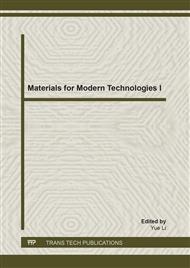p.33
p.39
p.45
p.51
p.57
p.61
p.69
p.75
p.81
Optimal Conditions for Bio-Oxidation of Biodesulfurization in Natural Gas Sweetening Process Using Thiobacillus
Abstract:
Hydrogen sulfide is a common composition of natural gas. It is an important problem to develop suitable natural gas desulfurization technology for the present situation of China. Now, a novel process of H2S abatement from gas streams has been investigated for chemical absorption of H2S using a weak alkaline solution followed by the oxidation of the absorbed sulfide to elemental sulfur by naturally occurring microorganisms and alkaline solution regeneration for recycle and reuse in the process. This method is currently attracting more and more interests of researchers, because it requires little equipment, is inexpensive and produces only elemental sulfur, thus minimizing the production of pollutants. The biological oxidation process of the absorbed sulfides to elemental sulfur by Thiobacillus thioparus TYY-1 was studied in an airlift-loop reactor (effective volume=20L).Two efficiency factors including hydraulic remain time and the air aeration quantity were inspected. The air aeration quantity is key influence factor of desulfuration rate and elemental sulfur production rate. The investigation demonstrated that the optimum hydraulic remain time was 4—6h under the influent concentration of S2- for 200 mg/L, and the best treatment effect of aeration was obtained at 120 —160L/h. With these conditions after 20 days of operation, the result showed superior performance of the bioreactor for desulfuration rate and elemental sulfur production rate, the conversion products were mainly sulfur and the production rate of SO42- was low. The removal efficiency of sulfide was more than 99.5% while the maximum yield of sulfur was 88% approximately.
Info:
Periodical:
Pages:
57-60
Citation:
Online since:
May 2015
Authors:
Price:
Сopyright:
© 2015 Trans Tech Publications Ltd. All Rights Reserved
Share:
Citation:


